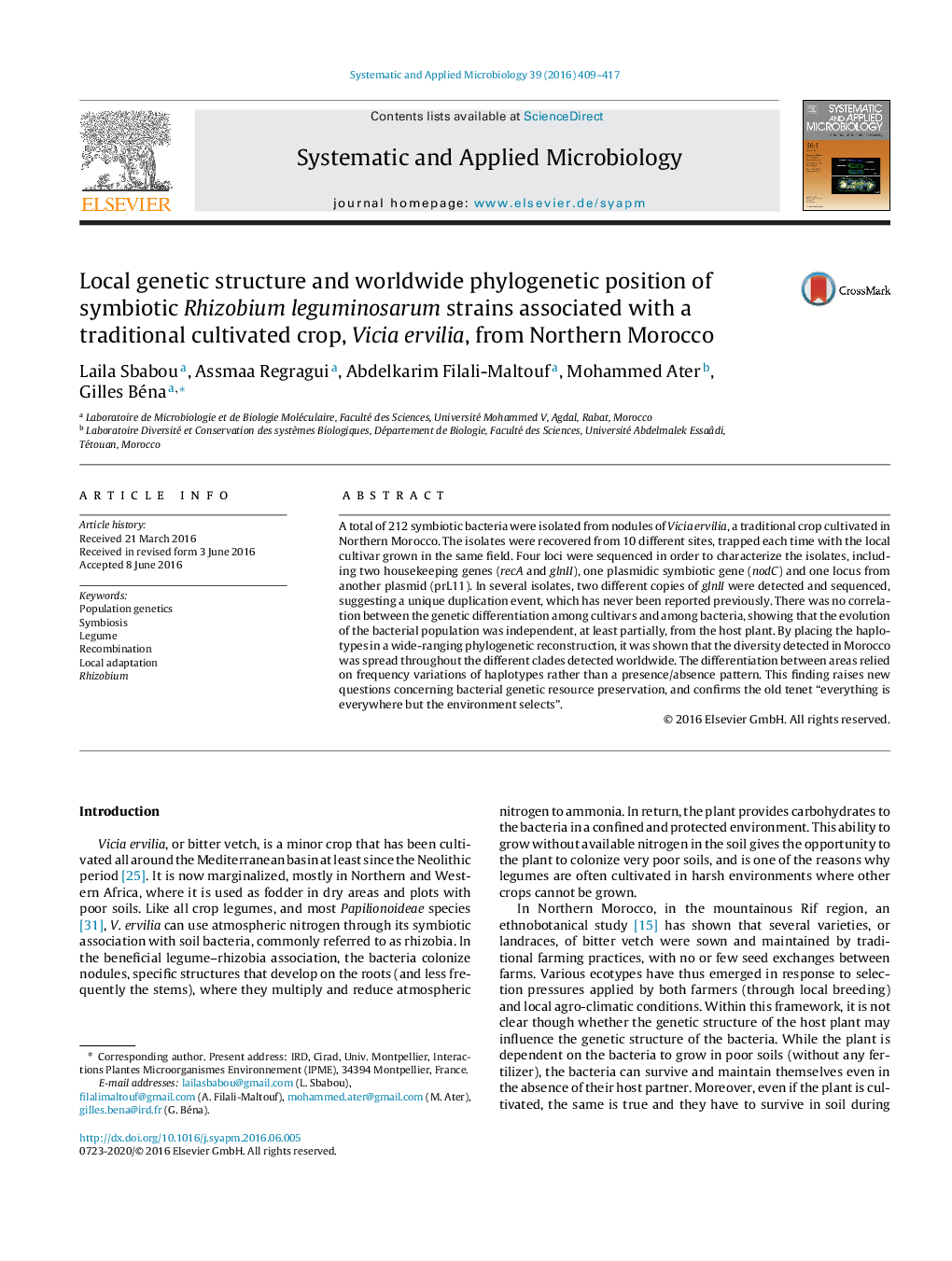| Article ID | Journal | Published Year | Pages | File Type |
|---|---|---|---|---|
| 2062893 | Systematic and Applied Microbiology | 2016 | 9 Pages |
A total of 212 symbiotic bacteria were isolated from nodules of Vicia ervilia, a traditional crop cultivated in Northern Morocco. The isolates were recovered from 10 different sites, trapped each time with the local cultivar grown in the same field. Four loci were sequenced in order to characterize the isolates, including two housekeeping genes (recA and glnII), one plasmidic symbiotic gene (nodC) and one locus from another plasmid (prL11). In several isolates, two different copies of glnII were detected and sequenced, suggesting a unique duplication event, which has never been reported previously. There was no correlation between the genetic differentiation among cultivars and among bacteria, showing that the evolution of the bacterial population was independent, at least partially, from the host plant. By placing the haplotypes in a wide-ranging phylogenetic reconstruction, it was shown that the diversity detected in Morocco was spread throughout the different clades detected worldwide. The differentiation between areas relied on frequency variations of haplotypes rather than a presence/absence pattern. This finding raises new questions concerning bacterial genetic resource preservation, and confirms the old tenet “everything is everywhere but the environment selects”.
